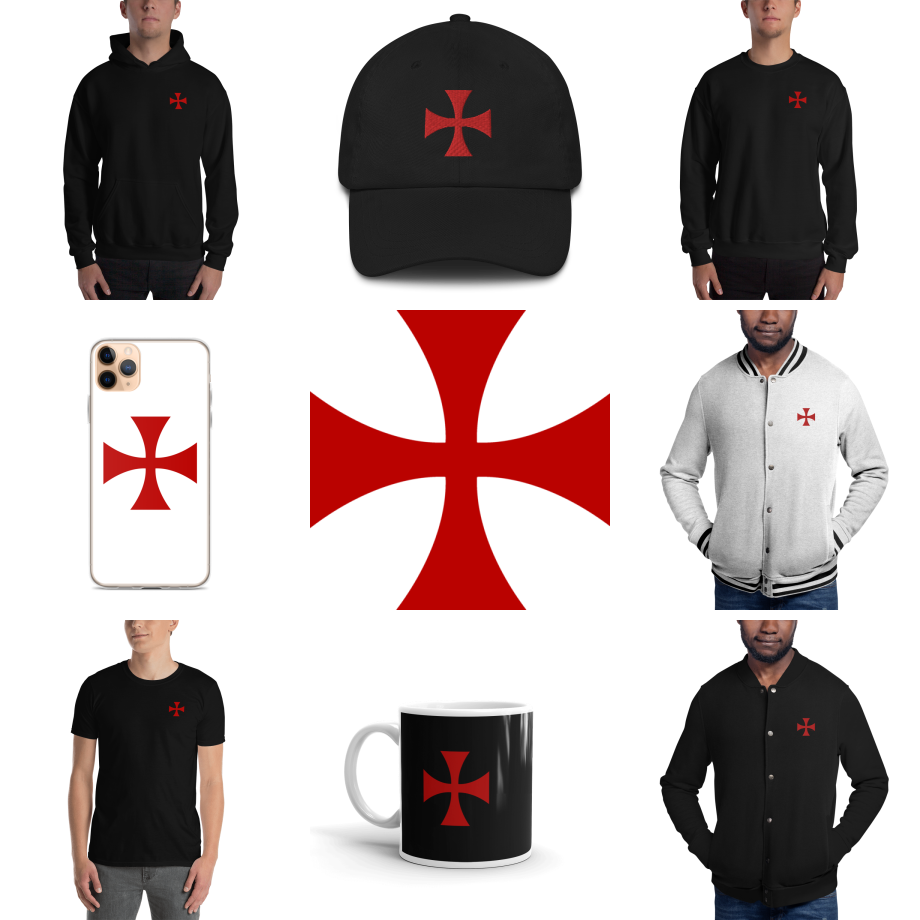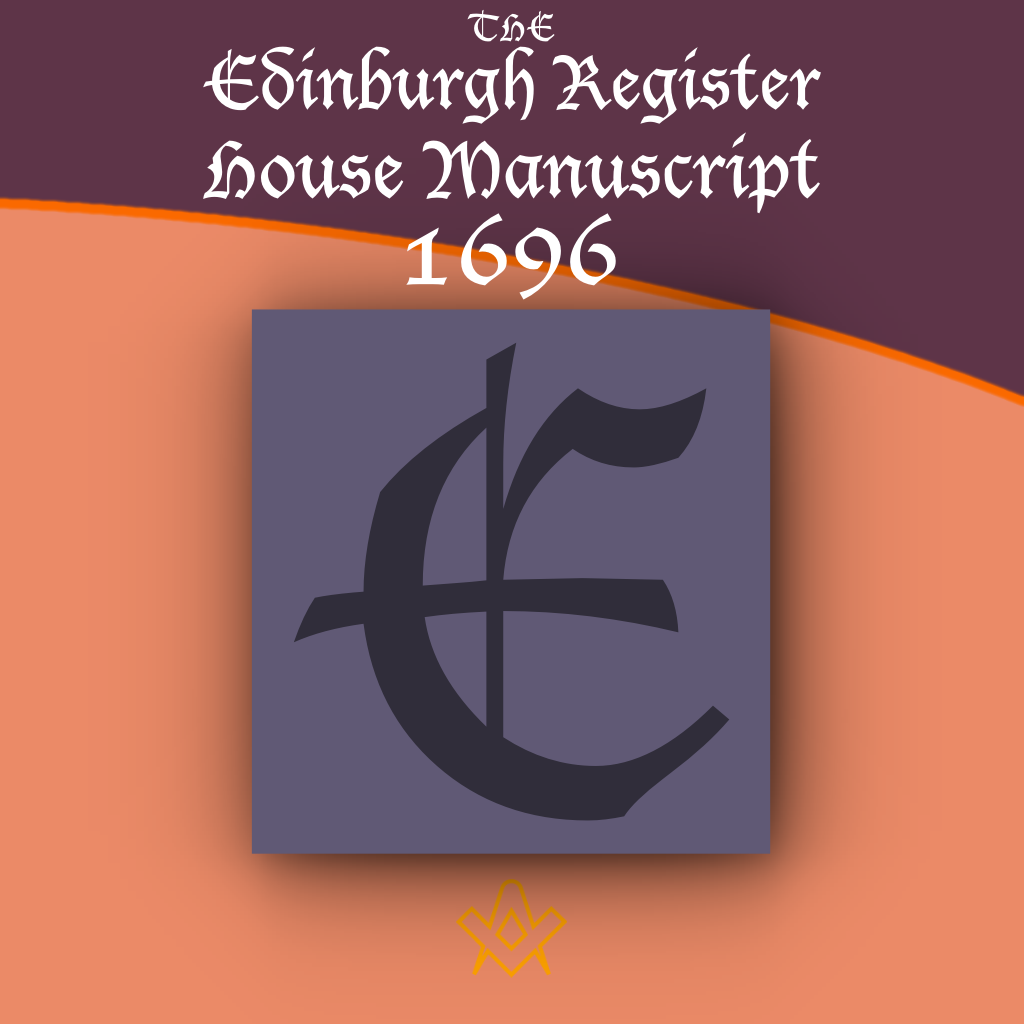Known as the Edinburgh Register House Manuscript, or simply as the Edinburgh Manuscript, this document is in fact titled:
‘Some Questions that Masons use to put to these who profess to have the Mason Word before they will acknowledge them’.
Its main feature, compared to the Old Charges and other previous documents is to provide, in addition to an interesting Masonic Catechism with questions and answers, a genuine ritual of admission.
The document – if not directly related to the Legend of Hiram, it does give guidance to the Masonic Lodge, in imitation of the Temple of Solomon, and provides two important symbolic elements of the degree of Master Mason to come:
the five points of the Fellowship and the Mason Word which, when integrated into the ritual of the degree, will be the five points of Fellowship of the Master’s degree and the Master’s Word itself, used to make from a legend a real esoteric myth.
The context – at the time the manuscript was written in Edinburgh, Scotland was the home to various lodges, including those of the operative Masons of Edinburgh, already known by the name of Mary’s Chapel and the Lodge of Kilwinning, which, still active nowadays, compete for the title of Oldest Scottish Lodge.
The Kingdom of Scotland was living its last years of independence; ten years later the land would be united with England to make Great Britain, a single state.
Source: http://theoldcharges.com/chapter-21.html
Wikipedia notes: Edinburgh Register House Manuscript
Similar to the original text
Some Questions that Masons use to put to these who profess to have ye Mason Word before they will acknowledge them:
Question. – Are you a Mason [1] ?
Answer. – Yes.
Q. – How shall I know it?
A. – You shall know it in time and place convenient.
Remark. The foresd answer is only to be made when there is company present who are not masons. But if there is no such company by, you should answer by signes, tokens, and other points of my entrie.
Q. – What is the first point?
A. – Tell me the first point ile tell you the second, The first is to heill [2] and conceal, second, under no less pain, which is then cutting of the throat, for you most make that sign, when you say that.
Q. – Where were you entered?
A. – At the honourable lodge.
Q. – What makes a true and perfect lodge?
A. – Seven masters, five entered apprentices, a day’s Journey from a burroughs town, without bark of a dog or crow of a cock. [3]
Q. – Does no less make a true and perfect lodge?
A. – Yes five masons and three entered apprentices &c.
Q. – Does no less?
A. – The more the merrier the fewer the better chear.
Q. – What is the name of your lodge?
A. – Kilwinning. [4]
Q. – How stands your lodge?
A. – East and west as the temple of Jerusalem.
Q. – Where was the first lodge?
A. – In the porch of Solomon’s Temple.
Q. – Are there lights in your Lodge?
A. – Yes three the north east. s w, and eastern passage The one denotes the master mason, [5] the other the warden The third the setter croft. [6]
Q. – Are there any jewells in your lodge?
A. – Yes three, Perpend Esler a Square pavement and a broad ovall. [7]
Q. – Where I shall find the key of your lodge?
A. – Three foot and an half from the lodge door under a perpend esler, and a green divot. [8] But under the lap of my liver where all the secrets of my heart lie.
Q. – Which is the key of your lodge?
A. – A weel hung tongue.
Q. – Where lies the key of your lodge?
A. – In the bone box.
After the masons have examined you by all or some of these Questions and that you have answered exactly and mad the signes, they will acknowledge you, but not as a master mason or fellow croft but only as as [an] Apprentice, soe they will say I see you have been in the Kitchine but I know not if you have been in the hall, And I have been in the hall as weel as in the kitchine. [9]
Q. – Are you a fellow craft?
A. – Yes.
Q. – How many points of the fellowship [10] are ther?
A. - Fyve viz foot to foot Knee to Kn[ee] Heart to Heart, Hand to Hand ear to ear. Then make the sign of fellowship and shake hands you will acknowledged a very Mason. The words are in 1 of Kings [11] Ch 7, v, 21, and in 2 chr: ch 3 verse last.
The Form of Giving the Mason Word
Impress, You are to take the person to take the word upon his knees and after a great many ceremonies to frighten him you make him take up the bible and laying his right hand on it you are to conjure him, to secrecy, By threatening that if [he] shall break his oath the sun in the firmament will be a witness against him and all the company there present, which will be an occasion of his damnation and that likewise the masons will be sure to murder him, Then after he has promised secrecy They give him the oath as follows:
By god himself and you shall answer to god when you shall stand naked before him, at the great day, you shall not reveal any part of what you hear or see at this time whither by word nor write nor put it into write at any time nor draw with the point of a sword, or any other instrument upon the snow or sand, nor shall you speak of it but with an entered mason, so help you god.
After he has taken that oath he is removed out of the company, with the youngest mason where after he is sufficiently frighted with 1,000 ridiculous postures and grimaces [12], He is to learn from the said mason the manner of making his due guard which is the sign and the postures and word of his entire which are as follows:
First when he enters again into the company he must make a ridiculous bow, then the sign and say God bless the honourable company. Then putting off his hat after a very foolish manner only to be demonstrated then (as the rest of the sign are likewise) he says the words of his entire which are as follows
Here come I the youngest and last entered apprentice As I am sworn by God and St John by the Square and compass, and common judge to attend my Masters service at the honourable lodge, from Monday in the morning till Saturday at night and to keep the Keys thereof, under no less pain then having my tongue cut out under my chin and of being buried, within the flood mark where no man shall know, then he makes the sign again with drawing his hand under his chin alongst his throat which denotes that it to cut out in case he break his word.
Then all the mason present whisper amongst themselves the word beginning at the youngest till it come to the master mason who gives the word to the entered Apprentice. Now it is to be remarked that all the signs and words as yet spoken of are only what belong to the entered apprentice, But to be a master mason or fellow craft there is more to be done which after follows.
First, all the apprentices are to be removed out of the company and none suffered to stay but masters.
Then he who is to be admitted a member of fellowship is put again to his knees, and gets the oath administrated to him of new afterwards he must go out of the company with the youngest mason to learn the postures and signs of fellowship, then coming in again, He makes the masters sign, and says the same words of entire as the apprentice did only leaving out the common Judge then the masons whisper the word among themselves beginning at the youngest as formerly afterwards the youngest mason must advance and put himself in the posture he is to receive the word and says to the eldest mason in whispering
The worthy masters and honourable company greet you well, greet you well, greet you well.
Then the master gives him the word and gripes his hand after the mason way, which is all that is to be done to make a perfect mason
Footnotes
Endorsements
NOTES
1. – Found alternatively in the text of the Edinburgh Register House Manuscript: Master, Mason and Master Mason, used for Companion or Fellow Craft; the Master Mason may also be the Master of the Lodge. The question: Are you a Mason?, and the following questions were included in all Masonic instructions set forth later, and still are today proposed for the reflection of new Apprentices.
2. – To heil (hele): Old verb meaning to conceal, to hide.
3. – If the Masonic Lodge is required to meet far from dogs barking and roosters crowing, it is because it requires silence and discretion. The statutes of the Scottish Lodge of Aberdeen, established in 1760, still prescribe today that its meetings take place “in the fields”.
4. – It appears from this response that the manuscript originated from the Lodge of Kilwinning, or at least a Lodge under its jurisdiction. The Mother Kilwinning Lodge, which currently bears the number “0” Number of the Grand Lodge of Scotland, pretends to be the oldest Lodge in the world with its creation in the year 1120.
5. – See Note 1.
6. – Operative Masons were classified, in Britain as Hewers, who hewed stones, and Setters who put up walls.
7. – Possible interpretation: Rough stone (Perpend Esler), mosaic pavement (square pavement), broked mall (broad ovall). See also the Chetwode Crawley Manuscript.
8. – Green divot – Name formerly given to cut sods of grassland used for caulking thatched roofs’ seams.
9. – The Kitchen can be likened to a preparation room, while the Hall may refer to the meeting room of the Lodge. It may originate in an operative tradition that fellows could meet their employers in the Hall of a building, while apprentices were required to stay in the Kitchen with servants and other menials.
10. – The same question is raised, in the same terms, in another document belonging to the early Catechisms: the Chetwode Crawley Manuscript, dated about 1700 by Masonic scholars, causing the same response, word for word. In both manuscripts, the five points of Fellowship are as follows:
• Foot to foot – knee to knee – heart to heart – hand to hand – ear to ear.
These points will appear in Samuel Prichard’s ‘Masonry Dissected’:
• Hand to hand – foot to foot – cheek to cheek – knee to knee – and hand in back.
11. – A recall of 1 Kings (7: 21): “And he [Hiram] set up the pillars in the porch of the temple: and he set up the right pillar, and called the name thereof Jachin: and he set up the left pillar, and called the name thereof Boaz…” J****n and B**z are given as “the Word of a Mason”.
12. – It is clear from the remarks made, that the transcriber of the manuscript had a pronounced or obvious taste for the dramatic.
Recent Articles: manuscripts
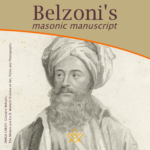 Belzoni's Masonic Manuscript is a valuable resource for anyone interested in the history and practices of Freemasonry, as well as for those interested in the broader cultural and social history of the early 19th century. The manuscript provides a rare glimpse into the inner workings of the organization, and offers insights into its beliefs, values, and practices. It is a fascinating document that continues to captivate and intrigue scholars and freemasons alike. |
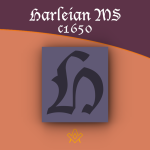 There are two known 'Harleian Manuscripts' which allude to the earliest constitutions of Masonry. |
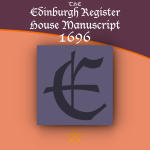 The Edinburgh Register House Manuscript (1696) At the time the manuscript was written in Edinburgh, Scotland was the home to various lodges, including those of the operative Masons of Edinburgh, it provides an interesting Masonic Catechism with questions and answers, a genuine ritual of admission. |
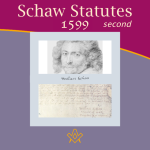 The Second William Schaw Statutes (1599) We look at a modern transcript of the second William Schaw Statutes dated 1599. An operative masons charter for stone cutters and layers in the building industry of the time. A set of rules and regulations including penalties. |
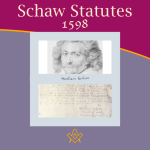 The First William Schaw Statutes (1598) We look at a modern transcript of the first William Schaw Statutes dated 1598. An operative masons charter for stone cutters and layers in the building industry of the time. |
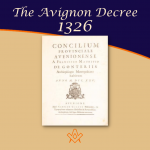 The Avignon Decree (1326) Papal Bull The several Papal declarations against Freemasons after the formation of the Grand lodge in England in 1717 are well known. The Avignon Decree (1326), published 400 years prior, is the earliest known document to set out the Catholic Church's intentions… |
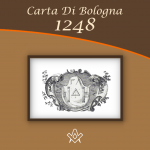 The Bologna Statutes Or Carta Di Bologna The Bologna Statutes or Carta Di Bologna 1248 - Masonic document of Operative Masonry, the oldest one found to date. |
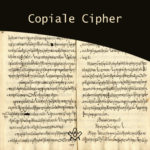 What is the connection between the Copiale Cipher and the great enlightened society of oculists ? |
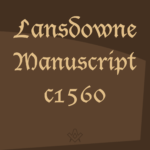 A very foolish legendary account of the origins of the Order of Freemasonry |
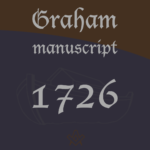 The Graham Manuscript dating from 1726 is an early Masonic document that calls upon Noah and this 3 sons in respect to Masonry, an alternative allegory to the Hiram legend. |
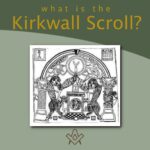 The Kirkwall Scroll is a hand-painted floor cloth depicting a myriad of symbolism |
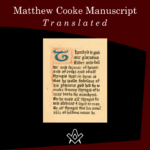 Matthew Cooke Manuscript was written c1450. A transcript of a yet older document, written by a Speculative Mason |
 Are you interested in the 'musty old documents of the past'? This article first appeared in The Builder magazine,1923 |
masonic knowledge
to be a better citizen of the world
share the square with two brothers

click image to open email app on mobile device
